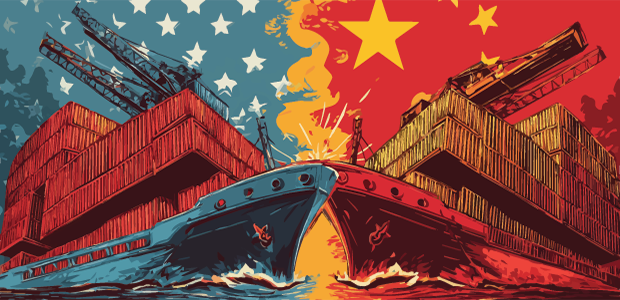
As tariffs reshape global trade, Europe emerges as a manufacturing powerhouse
Global manufacturing strategies are undergoing a fundamental shift. Tariffs, geopolitical tensions, and supply chain disruptions have exposed vulnerabilities in traditional manufacturing hubs, particularly in China. As a result, companies are increasingly looking toward Europe, not just as a market, but as a strategic centre for high-tech
manufacturing.
TARIFFS AND THE DIVERSIFICATION AWAY FROM CHINA
The imposition of tariffs by the United States on a wide range of imports, especially those involving electronics, semiconductors, and display technologies, has changed the calculus for many manufacturers. The once-straightforward decision to manufacture in China for cost advantages is now entangled in new layers of complexity: higher costs, longer lead times, and political risks.
These pressures have accelerated a trend already underway: diversification away from China. Businesses are seeking regional alternatives that offer both economic and strategic advantages. Europe – long regarded more as a consumer market than a manufacturing centre – is emerging as a compelling option.
EUROPE’S STRATEGIC ADVANTAGES IN A SHIFTING LANDSCAPE
Europe, and particularly the European Union, offers several structural advantages that are now resonating more strongly with manufacturers reassessing their global strategies:
• Single market access: the EU’s unified market eliminates internal tariffs and reduces regulatory friction between member states. For manufacturers, this means simplified logistics and faster access to diverse market Trade agreements and diplomatic stability: Europe maintains a robust network of free trade agreements with dozens of countries worldwide. Moreover, its political institutions, while imperfect, offer a degree of stability that is increasingly hard to find elsewhere.
• Government support for high-tech sectors: EU countries are actively investing in high-tech manufacturing through subsidies, R&D tax incentives, and green technology initiatives. In industries like display technologies and semiconductors, these incentives can significantly offset operational costs.
• Focus on sustainability and innovation: European manufacturing places a premium on environmental sustainability and technological innovation – values that are becoming central to global procurement decisions.
THE ROLE OF FRANCE AND OTHER EUROPEAN MANUFACTURING CENTRES
Within Europe, France is one of several countries positioning itself as a leader in advanced manufacturing. At the 8th Choose France Summit held on 19th May 2025, President Emmanuel Macron even emphasised France's reliability and predictability as a destination for international investment: “We are predictable!” With strong infrastructure, a skilled workforce, and government programmes aimed at reindustrialisation, France offers a stable platform for sectors traditionally reliant on Asian
production.
Other countries, including Germany, the Netherlands, and increasingly Central and Eastern European states, are also expanding their manufacturing capabilities, especially in high-value areas like automotive components, medical technology, and next-generation displays.
HOW GLOBAL BUYERS ARE RESPONDING
Across industries, there is a noticeable shift in customer expectations around sourcing:
• Diversification of supply chains: clients are no longer comfortable relying on a single region for critical components. They are actively seeking suppliers who can offer more resilient, multi-regional production strategies.
• Shorter lead times: with ongoing logistical disruptions, regional proximity is becoming a key purchasing factor. European-based manufacturing offers faster delivery to major markets compared to Asia-based supply chains.
• Ethical and sustainable sourcing: European manufacturing's strong emphasis on labour standards, environmental compliance, and corporate social responsibility is increasingly important to customers, especially in consumer-facing industries.
THE FUTURE OF MANUFACTURING: MULTIPOLAR, NOT MONOLITHIC
While China will undoubtedly remain a major force in global manufacturing, the era of complete dependence on a single region is over. The future will be characterised by a multipolar manufacturing landscape, with Europe playing a growing role, particularly in industries where quality, reliability, and geopolitical stability matter. For companies recalibrating their strategies in light of new tariffs and risks, Europe offers more than just an alternative – it offers a long-term foundation for resilient, innovation-driven growth.
Author profile:
With over 25 years of international experience in the high-tech sector, Pierre Laboisse is CEO of Aledia, a company which specialises in introducing LED technology to the world of microelectronics. He holds an MBA from Babson F.W. Olin Graduate School of Business and has served on the boards of KeyLemon and 7 Sensing Software.
This article originally appeared in the July/August 2025 issue of Startups Magazine. Click here to subscribe
For more startup news, check out the other articles on the website, and subscribe to the magazine for free. Listen to The Cereal Entrepreneur podcast for more interviews with entrepreneurs and big-hitters in the startup ecosystem.

